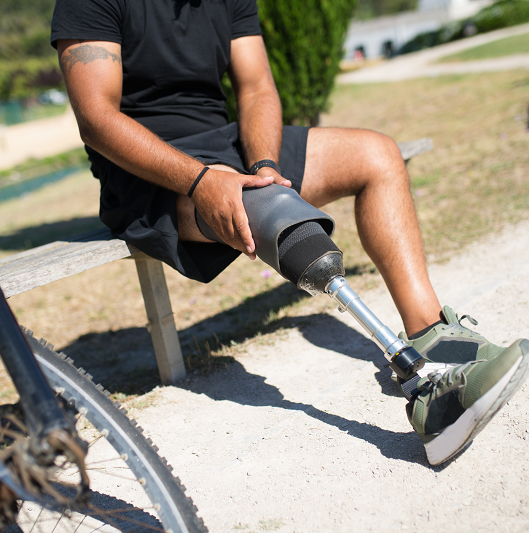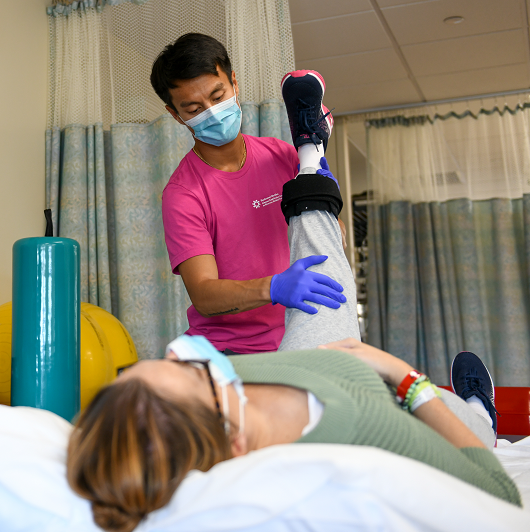Life After Amputation: What You Should Know

April 21, 2023
Losing a limb—whether as a result of an accident, injury or other reason—can have an enormous impact on a person, both physically and emotionally.
If you are facing an amputation, understanding what to expect can help you adjust to your new life and the coming changes.
Here are the top five things you should know about life after amputation.
1. Therapy is key, and adaptation will take time.
Immediately following the amputation, you will have physical and occupational therapy. It is important to maintain—and improve—the strength of your limbs.
“It takes more energy to walk with a prosthetic than it does with a native leg, so you may need to be stronger than you were before your amputation,” says Heikki Uustal, M.D., medical director of the Prosthetic/Orthotic Team at JFK Johnson Rehabilitation Institute.
Once a prosthetic is fitted, training will need to take place. The duration of this training through physical therapy depends on the limb amputated but can take up to six months. “It’s a long, slow process, but if you stay motivated and focused, you will thank yourself down the road for having invested in your recovery,” Dr. Uustal says.
2. Real and phantom pain may be a factor.
There will naturally be pain from the surgery to remove the limb. Pain intensity varies from person to person.
You may also experience “feelings” in the limb that is no longer there. You may only feel what is referred to as phantom sensations, where you feel the limb, but it doesn’t hurt.
However, you might experience phantom pain, where the missing limb hurts. “Phantom pain does require using medication management, but it’s different from the medicine that’s used for surgical pain,” Dr. Uustal says. Medications may include muscle relaxants, non-steroidal anti-inflammatory drugs or beta blockers.
Other techniques can help with phantom sensation and pain such as:
- Desensitizing or imagery techniques
- Acupuncture
- Medical marijuana
- Hypnosis
3. There may be psychological effects.
Depression and anxiety are often part of the healing process for those with an amputation. Dr. Uustal offers tips for coping:
- It’s important to have help in some form, whether it’s your family, a therapist or a support group.
- Discuss with your doctor realistic goals and expectations for your healing process and life after amputation. There can be pitfalls if your ideas of life don’t fit the reality of your situation.
4. Re-learning simple daily tasks is a part of the process.
You may need to adjust showering, or you may need to re-learn how to drive a car. Daily tasks will need to be modified, but you can learn to do them on your own. “The goal is always independence for the patient,” says Dr. Uustal.
5. You can live a full life.
The ultimate goal is to get you back to the activities that you love, so you can lead a full life. “You might have a few restrictions,” Dr. Uustal says. “For example, if you have an artificial foot, you might not be able to climb a ladder since you can’t feel the rung of the ladder and wouldn’t know if your foot is properly positioned.” But these restrictions are few and far between.
It will be a challenging process, but with support, practice and time, life can return to what it once was.
Next Steps & Resources:
- Meet our source: Heikki Uustal, M.D.
- To make an appointment with a rehabilitation specialist near you, call 800-822-8905 or visit our website.
The material provided through HealthU is intended to be used as general information only and should not replace the advice of your physician. Always consult your physician for individual care.





